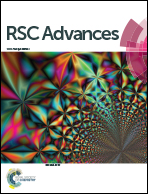Discovery of new targets of phenolic acids in danshen using a label-free cell phenotypic assay†
Abstract
Traditional Chinese medicines (TCMs) have been used in the clinic for thousands of years. Their reliable therapeutic efficacies are closely related to their multi-target mechanisms of action (MOAs). Discovery of these targets is important for understanding their clinical features. Danshen is the dried root of Salvia miltiorrhiza, a Traditional Chinese Medicine (TCM) used for the treatment of cardiovascular and cerebrovascular diseases. Although its clinical features are well recognized, the targets of its active constituents are poorly understood. Here, a label-free cell phenotypic assay was used to investigate the potential targets of the phenolic acids in danshen. Pharmacological profiling of 10 known phenolic acids in danshen using HT-29 and A431 cells revealed that lithospermic acid, salvianolic acid A, salvianolic acid B, salvianolic acid C and danshensu all displayed agonistic activity towards GPR35; however, salvianolic acid A and salvianolic acid C at high doses were also active in altering intracellular Ca2+ via another unknown target. Since GPR35 has been implicated in inflammation and cardiovascular diseases, the discovery of GPR35 as one target of the phenolic acids in danshen was useful for elucidating their mechanisms of action in the treatment of these diseases. This study also highlights the potential of label-free cell phenotypic assays for discovering multiple targets of TCMs.


 Please wait while we load your content...
Please wait while we load your content...